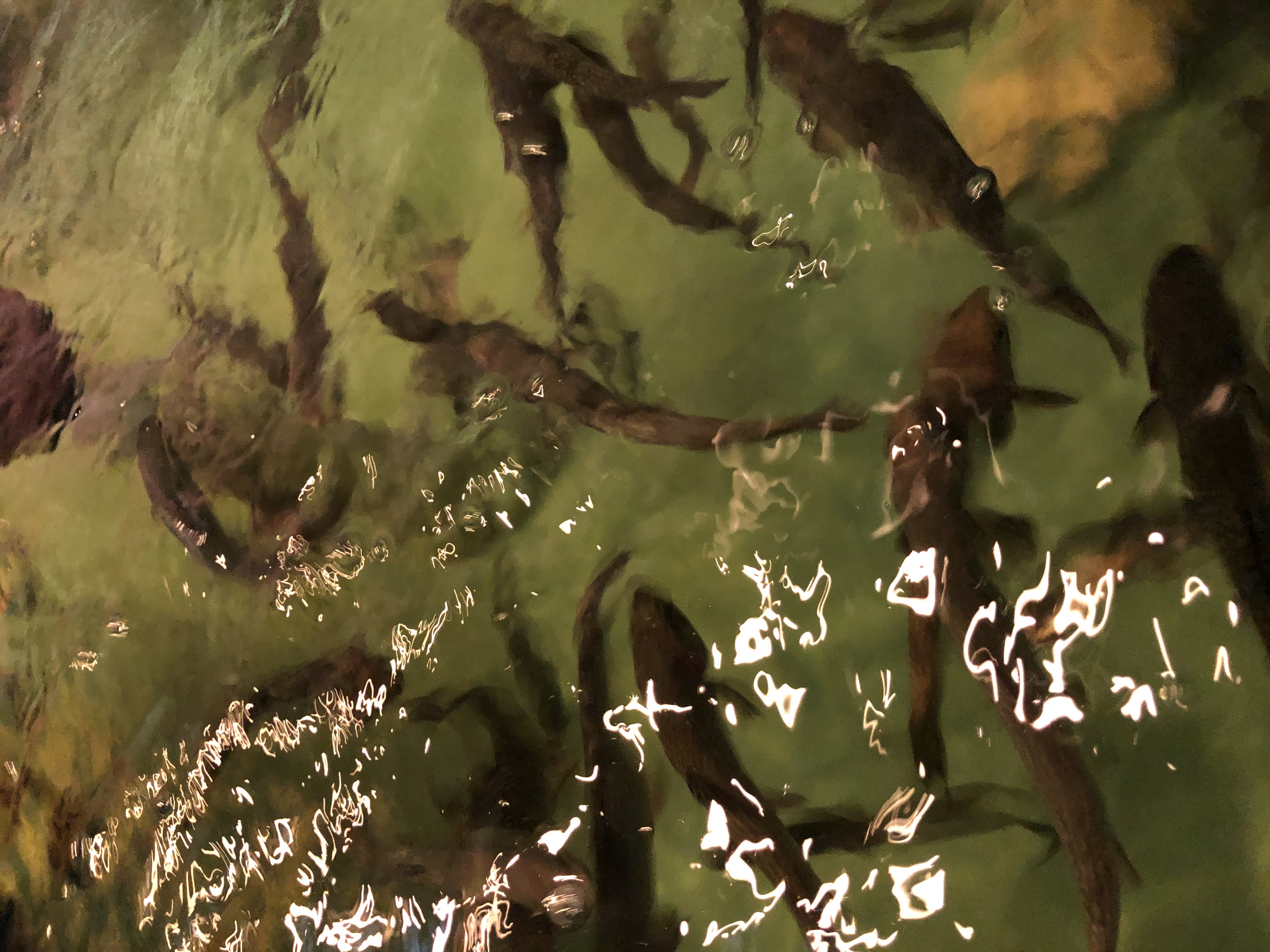Behind-the-scenes science continues in the Freshwater Mussel Hatchery
June 5, 2020

Largemouth Bass as the host fish for Tidewater Mucket mussels. 
Testing trout as the host fish for the Eastern Elliptio.
Although our doors are closed to the public, the science behind re-establishing our rivers mussel population continues.
Through April and May, our scientists collected gravid females of two different species of freshwater mussels, Eastern Elliptio and Tidewater Mucket. Host fish were collected and acclimated in the hatchery tanks. Trout is the host fish for Eastern Elliptio (above) and we attempted to use Largemouth Bass as the host fish for Tidewater Mucket (below).
A host is needed to complete a freshwater mussel’s life cycle. Glochidia (mussel larvae) are released by the gravid female and encyst on the gills of the host where they develop into juvenile mussels.
In April, an inspection of Eastern Elliptio mussels showed they were not carrying glochidia. Here’s an extraction attempt:
In May, glochidia were successfully extracted from Tidewater Mucket females and put in small containers with the Largemouth Bass to allow infestation.
The infected fish were kept in the zHab aquaria and fed regularly.
However, bass does not appear to be a viable host for Tidewater Mucket and juvenile mussels failed to develop.
This month, our hatchery scientist, Lance Butler, will begin working with a new species, the Eastern Pondmussel, which has been shown to use bass as a host. Stay tuned!!
